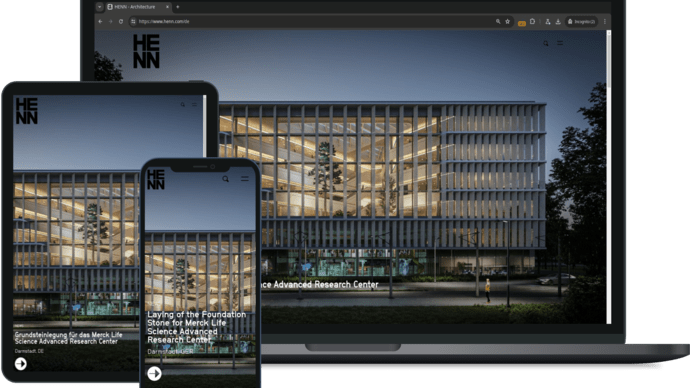Definition: Wordpress is a free web application (open source) and serves as a content management system (CMS) for managing the content of a website. Wordpress is based on PHP and requires the MySQL database.
What exactly is WordPress?
"What is WordPress?" is quite easy to answer: WordPress has been one of the most popular content management systems (CMS) for many years and is used not only for weblogs but also for company websites. The quick and easy installation makes it possible to create a website within minutes. Many thousands of themes, free or available for purchase, offer designs for every taste. "What is WordPress?" can also be answered in more detail, so you can find all the important information here.
Where can I find the latest WordPress version?
You can download WordPress for free in German. You can always find the latest version of the open source CMS as a zip file at https://de.wordpress.org/download/. However, you can also obtain WordPress with all language packs from the international site https://wordpress.org/download/. Once you have unpacked the file, you can start making configurations. You can find a good explanation of this at https://wp-ninjas.de/wordpress-installieren.
If you already have a working WordPress installation and there is a new version, the system will notify you and you can download and install it directly via the backend. To do this, go to /wp-admin/update-core.php. Here you will be shown which version you are using and whether this is the latest version.
Where can I host WordPress?
The vast majority of "big" providers such as 1&1, domainfactory etc. offer WordPress hosting. As long as the host fulfills the minimum requirements, you can host WordPress there.
t3n reports on 13 different other providers in https://t3n.de/news/wordpress-hosting-anbieter-vergleich-604474/. The differences lie in the service, available hard disk size, speed, minimum contract term, etc. Before signing a contract, you should be clear about how high your data volume and the expected traffic of your website will be.
Change the design: Install a new theme!
Themes are designs that are applied to the structural and technical interface. In principle, themes can be exchanged or changed at will. You can do this directly in the backend of the website with a click. However, if themes have special features, it is not so easy to change them.
WordPress comes with several pre-installed themes, which are more or less modern and are sufficient for most small applications or for testing the system. If you don't like the designs or are missing theme functions, there are two basic ways to find and install new themes.
Way 1: Via the backend
Visit the page /wp-admin/themes.php in your backend.
Click on "Add".
You will now see an overview of all currently available themes. You can narrow these down at the top.
Filter by functions, for example.
As soon as you like a theme, you can hover over it and click on "Preview". This will show you a usable preview of the theme in full screen. You can also install the theme directly by clicking on it.
Once the theme has been installed, it will be in your theme collection and you can activate it to use it.
Way 2: Search for themes on the Internet
A simple search via Google for "wordpress themes" or "wp themes", for example, will provide you with websites that offer themes free of charge or for a - often small - purchase price. At https://de.wordpress.org/themes/ you will find the same themes as via your backend. Sites such as Themeforest offer themes for various CMS, including WordPress: https://themeforest.net/category/wordpress. These are usually available for purchase.
As soon as you have selected and, if applicable, purchased a theme, you can download it. The easiest way to install it is in the backend of your WordPress installation on the page /wp-admin/theme-install.php. To do this, click on "Upload theme".
WordPress will then save the theme files in the installation directory and you can activate the theme, as well as directly downloaded themes.
Each theme has its own settings and features. Good themes are therefore well documented, but often only in English.
How can I add functions to my WordPress installation?
If you have just installed WordPress, you will have the "bare" core with everything you need to create and publish content. However, it often happens that basic functionalities are not enough. That's why WordPress, like many other systems, offers the option of adding functionalities to the core.
What Drupal modules are, WordPress calls "plugins". These are pieces of software written in PHP that extend the core code. They are written specifically for WordPress and, if they are always kept up to date by the developer, can always be used with the latest WordPress version.
If you search the internet for "best plugins wordpress", you will find websites that provide lists of the most important plugins on the market, explain their functions and often also rate them. Especially if you want to browse through what's available, it's worth doing this search regularly. Here are two examples of German sites:
- https://www.blogmojo.de/beste-wordpress-plugins/
- https://www.ionos.de/digitalguide/hosting/blogs/wordpress-plug-ins/
If you want to think outside the box, it's worth doing an English search, which will return English-language websites. Here you will also find plugins that our German colleagues do not have on their screens, e.g. on https://themegrill.com/blog/best-wordpress-plugins/.
You can also search for and install plugins directly via the backend of your WordPress installation. You can find all installed plugins in /wp-admin/plugins.php. You can activate or deactivate plugins here and make settings if necessary.
Click on "Install" to install new plugins.
You will see a gallery with all currently available plugins.
Here too, you can filter at the top or search directly for a plugin or function. A plugin provides the following information here:
- Logo: Easier to recognize, as some plugins have the same or very similar names
- Name of the plugin
- Description: Often in English
- Author: Clicking on this leads to the author's website and provides an overview of further work.
- Further details: Read in detail what the plugin does and how you should use it.
- Rating stars, number of ratings and number of active installations: Important indicators of the plugin's quality and popularity.
- Last updated: The date should not be too long ago. This shows that it is kept up to date.
- Compatibility: Shows whether the plugin can be used with the currently installed WordPress installation.
- Click on "Install now" and then activate the plugin. A good plugin, like a good theme, has proper documentation.
The same applies to plugins: there are free and paid plugins. Neil Patel has presented some of them in this article: https://neilpatel.com/de/blog/13-kommerzielle-wordpress-tools-die-deinen-blog-traffic-verdoppeln-konnen/
Where can I find help with WordPress?
WordPress has a large community. You can find help from developers and other users. You can find German-language support and help in the WordPress forum https://de.wordpress.org/support/, in the forum at WPDE http://forum.wpde.org/ or in the WordPress group at XING. There is also a Slack group. You can find out how to register there at https://de.wordpress.org/slack/.
It may be necessary to seek support in the English-speaking community. There is the English-language WordPress forum and WordPress Development at Stackexchange.
If you have purchased themes or plugins, the developers offer help on their websites in the form of FAQs, tutorials or in a forum. Visit the developer's website for this.
If you want to get to know other developers or users and exchange ideas regularly, Meetups are the right place. You can find all Germany-wide meetups here: https://de.wordpress.org/meetups/.
Is WordPress something for me?
As mentioned at the beginning, WordPress is quick to install, easy to learn and offers normal image websites everything they need to exist on the Internet. In the sections on themes and plugins, you will have learned that there are thousands of extension options. The more complex your requirements, the more time you need to plan for technical maintenance, updates of plugins and themes and the risk of incompatibilities between different plugins. Then there is the issue of security. If you don't maintain your website well or host it with a bad hoster, you run the risk of hacker attacks with a CMS as widespread as WordPress.
For sophisticated websites or web applications that need to be multilingual, for example, with multidomain management, high traffic and many interfaces to the company or other services, WordPress is probably not for you. That's not what WordPress was made for. The system was primarily written for bloggers, but is now also often used for small to large online stores or as an additional system for simple landing page generation, for example, but not for feature-rich, enterprise websites.
That's why we have always worked with Drupal, which is also open source and has a very large community, but is much better suited to complex projects. With Drupal, you can also benefit from existing modules that extend the Drupal core. So you don't have to reinvent the wheel. However, if you have a demanding requirement, Drupal can be configured very individually.
Do you have a demanding project in the pipeline and would like to see it implemented conscientiously? Talk to us! Call us without obligation on 0711 633 779 60.
Video:









